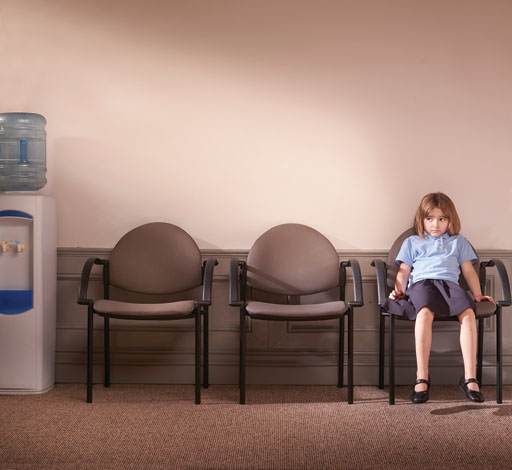Conditions

UNCERTAIN TERMS
In Conditions
Bookmark
Record learning outcomes
As September beckons, pharmacists need to be prepared to help parents with the challenges of a range of back to school conditions.

Children returning back to school after a long six week break can be a joyous occasion for many parents, but this relief is often short lived once the notes about outbreaks of classroom nasties start appearing in book bags.
Over the course of this past school year my children have brought home notes about head lice, scabies, slapped cheek syndrome, chicken pox and thread worms. Although these things are commonplace and often don’t require a trip to the GP, parents will look to the local pharmacy so it is important that you are stocked up for the new term and beyond.
Head case
Lice are a common issue in childhood and can reoccur time and again, but the key to getting rid of the little blighters, and keeping them at bay, is vigilance. The most obvious sign of head lice is an itchy head, but regular checks are the key to catching them in the early stages. They need to be treated as soon as they are spotted and everyone in the household needs to be checked over too.
“Pharmacists and their teams can help support parents with guidance on combing techniques, how and where to look for head lice and their eggs, as well as the different treatment options available,†says Farah Ali, general manager at Perrigo’s centre of excellence, Warman-Freed pharmacy. “Not all treatments are the same, and the length and type of treatment can be important.â€
There are many treatments on the market, which have progressed from the strong chemical-scented variants of yesteryear. Today there are mousses, sprays and oils that can help eradicate lice by suffocating them and preventing new eggs from being laid.
“Wet combing is a way of removing head lice without having to use a lotion to kill them,†explains Abraham Khodadi, aka YouTube’s Abraham the Pharmacist. “Anybody of any age can have this treatment and it does not involve any chemicals. The downside to this treatment is that it is time-consuming, but if done properly it does work.â€
There are natural products on the market for treating head lice. Puressentiel’s Anti-Lice Treatment, for example, is made with natural, plant and essential oils solutions and claim to eliminate lice, larvae and nits after just 10 minutes.
“It acts by suffocating the lice,†explains Dr Chris Etheridge, medical herbalist and adviser to Puressentiel. “Coated with greasy substances which obstruct their respiratory openings, lice are unable to develop resistance to such treatment.â€
Attack is the best form of defence, so encouraging customers to take measures to prevent outbreaks is a great idea. Lyclear Repellent has been clinically proven to help prevent a head lice infestation for up to 24 hours. All parents need to do is simply spray their children’s hair before school.
Skin deep
Scabies is an itchy skin condition caused by mites and can affect people of all ages, but it’s particularly common in the elderly and young. The itching is usually worse at night and it presents as red scaly areas similar to eczema.
“Patients should consult their pharmacist as to which is the best medication to treat scabies,†says Lisa Bickerstaffe, British Skin Foundation spokesperson. “It’s important that other people in their family and sexual partners are treated too, even if they aren’t showing signs of the condition.â€

If not treated, scabies can last for months, or even years. It’s worth mentioning to patients that even after the mites have been killed the itching will persist for some weeks afterwards.
“The usual scabies treatment is with permethrin cream,†says Khodadi. “Permethrin is an insecticide that kills the mites. If permethrin cannot be used, an alternative is to use a lotion called malathion liquid.â€
What lies beneath?
Threadworms are thin worms found in or around the anus and in faeces. They’re extremely common in childhood and can spread easily, but thankfully they are easily treated.
Worms usually appear at night and can induce symptoms such as extreme itching around the anus or vagina, weight loss, bed wetting and irritated skin around the anus.
I remember being baffled one night when my daughter woke screaming and writhing around until I saw a white, wiggling worm and was horrified! However, we treated the whole family with Ovex and now keep a spare in the bathroom cabinet just in case...
Mebendazole is used for the treatment of threadworms and is available in a chewable tablet or liquid form. It’s important to treat everyone in the house and it may be necessary to have further treatment two weeks after the first dose. “Pharmacists need to remember that if they need to treat a child under two, or a patient who is pregnant or breastfeeding, an over the counter treatment might not be suitable and patients may need to speak to a GP,†reminds Khodadi.
It’s also important to remind patients that eggs can survive for up to two weeks outside the body, so it’s important to wash all bedding, towels and underwear to break the cycle of infection.
Breathe easy
According to Asthma UK, on average there are three children with asthma in every classroom in the UK. This means there is a great need to ensure that children, parents and teachers are given a refresher course on inhaler techniques.
Encouraging patients to write a written asthma action plan is a great way to reduce the risk of an attack. This will help anyone looking after a child to know exactly what to do in any situation. Carers should share this information with teachers and friends’ parents.

“Community pharmacists are ideally placed to help monitor asthma control,†says Dr Andy Whittamore, who is Clinical Lead at Asthma UK. “Using a reliever inhaler three or more times per week is a sign of poor asthma control. Anyone using more than one reliever inhaler per month should have their asthma control reviewed.â€
Bad habits are easily formed when it comes to inhaler techniques, which can have dire consequences for children. The pharmacy is good environment in which to teach children the appropriate technique.Â
A new smartphone app called Trainhaler Buddy has been developed to help patients with their technique, and which can also be used by healthcare professionals to help patients.
Available to download from the App Store or Play Store, the app is used in conjunction with a Trainhaler (Clement Clarke International), a training device equipped with a whistling mouthpiece (Flo-Tone) that teaches patients to use a pressurised inhaler.
“In everyday life pressurised metered dose inhalers are difficult devices to use and require a considerable amount of ongoing training and enforcement to ensure the correct dose is delivered to the lungs,†says Jayne Longstaff, lead specialist respiratory research nurse at the Portsmouth Hospital NHS Trust. “Therefore, it is essential that all healthcare professionals provide patients with clear instructions and training on how to use their inhalers correctly, to guarantee maximum benefit.â€
